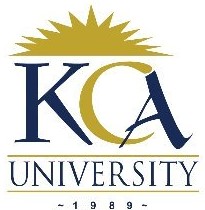 UNIVERSITY EXAMINATIONS: 2013/2014
UNIVERSITY EXAMINATIONS: 2013/2014
ORDINARY EXAMINATION FOR THE BACHELOR OF SCIENCE
IN INFORMATION TECHNOLOGY
BIT 2107 OBJECT ORIENTED ANALYSIS & DESIGN
DATE: AUGUST, 2014 TIME: 2 HOURS
INSTRUCTIONS: Answer Question ONE and any other TWO
QUESTION ONE (COMPULSORY)
(a) Differentiate between the following object oriented terms:
(i) Object vs Class (2 Marks)
(ii) Aggregation vs Composition (2 Marks)
(b) (i) Outline any four characteristics of the object oriented approach to systems
development. (4 Marks)
(ii) Highlight any three limitations of the structured approach to software
development (3 Marks)
(c) Explain the steps followed in the analysis and design stages of the object-oriented
approach to systems development. (4 Marks)
(d) Define Unified Modeling Language (UML) in object orientation and describe
its main building blocks. (4 Marks)
(e) Define sequence diagram and show symbols used to draw them. (5 Marks)
(f) Describe the three views used in UML and at least give an example of one
diagram in each view. (6 Marks)
QUESTION TWO
(a) The terms visualization and documentation are some of the elements achieved via the
use of UML. Explain the meaning of these two terms. (4 Marks)
(b) (i) Explain the benefits of the Unified Software Development Process (USDP).
(4 Marks)
(ii) Using a diagram explain the main phases of USDP. (10 Marks)
(c) State the difference between a product and a project in software development.
(2 Marks)
QUESTION THREE
(a) Differentiate between a model and a diagram. (4 Marks)
(b) (i) Using suitable symbols, describe the main parts of a use case diagram.
(6 Marks)
(ii) Describe the following use case relationships, giving an example scenario of each
one of them: INCLUDES, EXTENDS (4 Marks)
(c) Draw a suitable use case diagram based on the description given below:
(6 Marks)
You are asked to model a system for a video library. The librarian stocks both DVDs
and video tapes. When a potential client visits the shop, the librarian checks in the
database to establish whether the client is registered or not. If the client is not
registered, he/she is advised by the librarian to register with the library first before any
services could be rendered. Once a client has been registered, he/she is eligible to
borrow at most one library item per week. The item borrowed must be returned before
any other item can be borrowed. If the client does not return the item within a month,
he/she is surcharged a certain amount per day up to the time he/she returns the item.
QUESTION FOUR
(a) (i) What is a state diagram? (2 Marks)
(ii) Create a state diagram for this scenario. (10 Marks)
The washing machine has 2 major states : pause and runnable. A washing machine
in the runnable state cycles around the following substates – stopped, filling, washing
and spinning. The machine can only start running if the door is closed and the
machine will pause immediately the door is opened. The washing machine runs to a
program. The machine will restart the program each time it re-enters the runnable
state
(b) What do you understand by the following terms as used in Object oriented concepts?
(i) Prototyping (2 Marks)
(ii) Spiral Model (2 Marks)
(iii) Inception (2 Marks)
(iv) Transition (2 Marks)
QUESTION FIVE
(a) Consider the following scenario.
“Nurses work on a particular ward. Doctors are assigned a number of patients
and during their rounds visit a number of different wards. If a doctor needs
advice he/she may consult with a specialist consultant regarding a particular
patient. The specialist may see the patient. Specialists are basically senior
doctors.”
Draw the class diagram to include any inheritance, aggregation or composition and
multiplicities where possible. (12 Marks)
(b) A student in KCA University intends to go for a class. Draw his possible activity
diagram. Remember to include swim lanes, forks , joins among others. (8 Marks)
